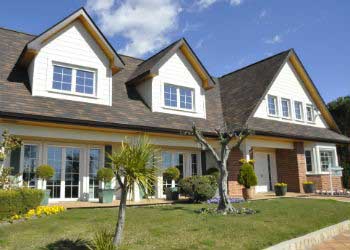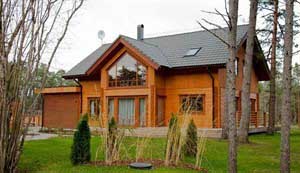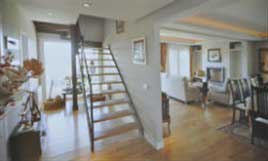Sustainable construction: wooden house
Sustainable construction is a more ecological and economic alternative compared to homes made of traditional brick.Wooden houses are a more ecological and economic alternative than homes made of traditional brick and concrete. Wood is not only a part of nature, but its use is beneficial for the environment. These wooden homes are made from natural, non-petroleum materials that are recyclable and biodegradable and are also considered 'ecological'. 
The wood used in sustainable construction is certified and originate in responsible logging: the manufacturers plant new trees for each tree they fell. For them, maintaining this balance is important.
Besides, building with wood requires less energy, has a lower environmental impact and smaller carbon footprint than conventional building methods: wood absorbs CO2.
Sustainable construction: Types of wooden houses
House made of logs: Built or assembled directly on the plot, using trunks that give it a characteristic final appearance. An advantage of this system is that the thickness of the wood acts as a wonderful interior humidity and temperature regulator. Square logs, which fit better against each other, can be used.
Heavy wooden framework: These structures are somewhat more complex; wooden beams are latched together to house large glass window surfaces.
Light wooden framework: This is the most common alternative and the one used in Canadian houses. A large amount of small components are used, that facilitate building modules, interchangeability and pre-manufacturing.
Mobile: These houses are mounted in the factory and transported in very large parts to their final destination. Houses can be made as a single part or in several sections, depending on the final size. The walls can be made of finished wood or other kinds of finishing.
Advantages of wooden houses
Wood does not act as a thermal bridge, but as insulation, therefore keeping the house cool in the summer and warm in the winter, which makes it a much more sustainable construction house. Savings have been calculated to be between 50% and 60% per year in heating and air conditioning.
The walls in Canadian houses include a material that not only insulates from outside noise, but also helps steady the temperature: it can be rock wool, lamb wool, recycled cotton, etc., all of which are ecological materials with 0 oil-derivatives.
The materials used for finishing can be any, from materials made of pressed wood, natural stone, artificial stone, tile, shale, etc., which minimizes construction maintenance.

Among the family of wooden houses, Canadian houses are not pre-manufactured: they last longer than a traditional home and require less maintenance.
Canadian houses are built quickly and are 30% cheaper than traditional concrete and brick homes.
Disadvantages of wooden houses
You always have to be sure that the material is in perfect condition: careful with wood that is too humid and can contain rot.
Insects, such as termites or dust beetles can damage the wood by making holes in it, which would affect the duration of your house or require renovation.
As concerns maintenance, it has to be checked every once in a while, since it might need exterior paint, gap sealing, etc.
This type of construction would not be viable for the entire population, either because of the materials used or the space required for them, considering the problem of overpopulation. It would not be sustainable.
Sustainable construction: False myths about wooden houses
Durability: While certain highly admired, solid concrete houses are ready to be torn down after 40 years, in some northern European countries there are wooden homes that have been inhabited for over 200 years.
Fires: fires are most commonly started in homes by items inside the home: a cigarette butt not put out properly, a short-circuit, etc. and what catches fire is the furniture inside, so the risk of fire is the same. If the fire is not put out soon, the wood catches fire but burns very slowly. The worst result is that the home will be reduced to ashes if the fire is not put out quickly. However, the high temperatures in a house made of concrete can cause cracks that may also result in having to tear down the home.
Taking into account energy savings, recyclable materials and the difference in price when compared to traditional homes, isn't it worth considering? Wooden houses can be more sustainable houses.






